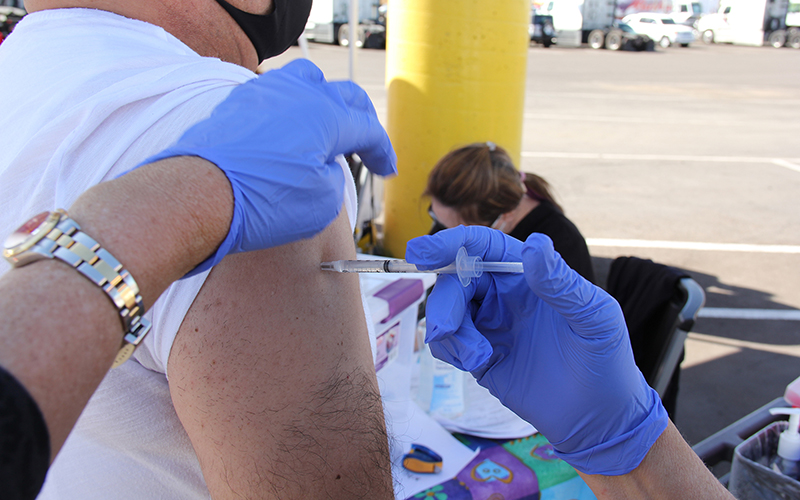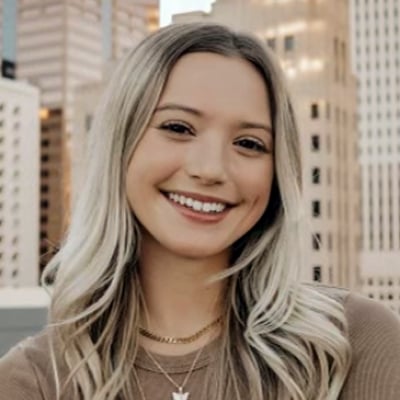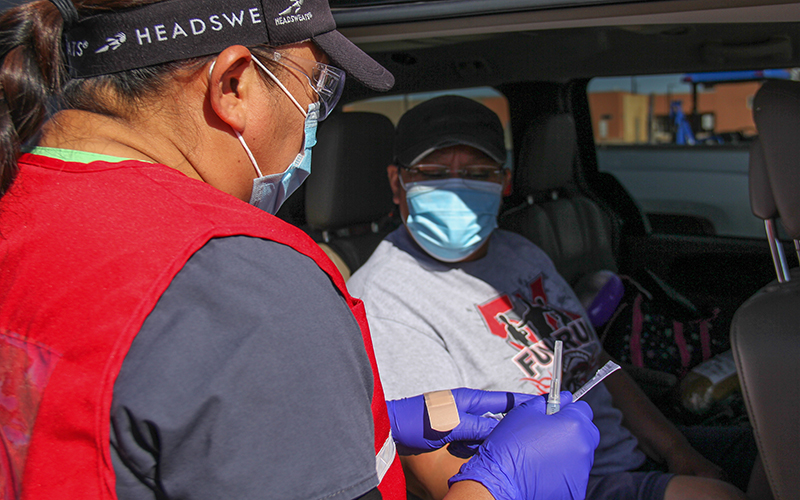
A Bashas’ worker gets a dose of the Johnson & Johnson vaccine during an event in March. Vaccination rates have fallen sharply from a high of more than 75,000 a day in early April to fewer than 10,000 doses on some recent days, but state health officials still hope to hit a CDC goal of 70% of people vaccinated by July 4. (Photo by Travis Robertson/Cronkite News)
WASHINGTON – COVID-19 vaccination rates have fallen sharply in Arizona, but health officials are still hopeful the state can reach a Centers for Disease Control and Prevention goal of vaccinating 70% of Arizonans by July 4.
To do that, the state is shifting its efforts from mass-vaccination sites to more community out-reach efforts and continuing to expand vaccination opportunities to include pharmacies, doctors’ offices, community events and mobile pop-up events.
“I am fearful with the decreased demand it’s going to be harder to reach that 70%, but I am hopeful Arizona will,” Dr. Cara Christ, the Arizona Department of Health Services director, said in a briefing Friday.
As of Friday, almost 3.4 million Arizonans had received at least one dose of the vaccine, or about 46.8% of the state population. The department said just under 2.9 million have been fully vaccinated.
Christ said the state is in the process of “phasing down” its large-scale vaccination sites, with decreased days and hours of operation leading up to the closure this month. The Gila River Arena will be the last of those sites to close, on June 28, which means people will have to schedule their first shot by June 5 if they want to follow up with their second shot at the site.
One health expert welcomed the shift toward more community-based sites, but said it should have come much sooner.
“The state vaccination sites were high volume for a particular demographic, which was wealthy, white, and retired people who were able to go whenever they wanted to get an appointment and access technology,” said Will Humble, executive director of the Arizona Public Health Association.
Humble pointed to challenges that have made it harder for lower-income residents to get vaccinated, including transportation, time off from work, a lack of access to technology and language barriers.
“The state needs to give more money to county health departments so they can do more mobile vaccination events at people’s work, allowing them to get vaccinated on their lunch break,” Humble said.
Christ said the state is working with local partners to expand vaccination opportunities, particularly among populations with lower vaccination rates, including veterans, Black men and young people between the ages of 18 and 30.
“Historically Arizona has had pockets of vaccine hesitancy,” which appears to be on the rise, Christ said. The COVID-19 vaccine is not immune from those concerns, she said, adding that misconceptions about the vaccine are part of the problem.
“We need to assure people that vaccines are safe and effective, and that they’re free and they significantly prevent hospitalization and death,” Christ said.
One way to reach people is through their personal doctors. Christ noted that more than 50,000 doses have been ordered by providers, although Humble said that smaller clinics have been reluctant to order because the state will not offer fewer than 1,100 doses per order.
Christ said one factor delaying vaccinations may have been parents who did not want to take their children out of school for a vaccination, while other people may just be taking a wait-and-see approach.
While some states have used everything from special lottery drawings to vouchers and event tickets to entice people to get vaccinated, Arizona’s inducements have been more limited so far.
Christ said the department is coordinating with Blue Cross Blue Shield and the Arizona Diamondbacks on a vaccination event on Saturday, June 5, at Chase Field. Arizonans 12 and older who get the Pfizer vaccine will have a chance to run the bases and will get a free ticket to a future Diamondbacks game.
She said Arizona will monitor this event to see if incentives increase vaccinations.
Other events under consideration include back-to-school vaccination events to encourage more adolescents to get vaccinated. The department noted that the CDC has reversed its earlier guidance and now says children can get their routine vaccinations at the same time as the COVID-19 vaccine.
Humble said the state still needs to do more to reach underserved communities, by getting trusted members of the community to disseminate vaccine information, and to reach young adults, who have the lowest vaccination rates of any group.
“There needs to be more creative and convenient opportunities for people in their 20s and 30s to get vaccinated,” he said, suggesting such “spontaneous” events like mobile pop-up events outside nightclubs and bars so young people do not have to go out of their way to get vaccinated.


